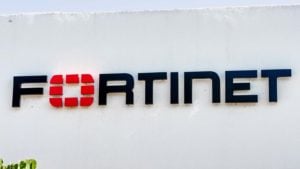
Covered call stocks allow investors to earn additional income from their positions. It’s a second dividend, and most publicly traded stocks are eligible for covered calls.
You need to own 100 shares to sell a covered call. The seller receives a premium, but is obligated to sell their 100 shares at the designated strike price. If shares do not exceed the strike price, you get to keep your shares and the premium.
Covered call stocks allow investors to minimize their potential downside while capping their gains at a certain level. The maximum gain from any covered call is the strike price plus the premium. When the stock’s market price goes beyond that point, the stock gains and losses from the covered call cancel each other out in the end.
Options traders often look for stocks with high premiums for this strategy. They may also sell far out of the money calls for companies they want to hold onto for the long run. Options traders may want to consider the following stocks for covered calls.
Shopify (SHOP)

Shopify (NYSE:SHOP) has the making of a generational winner. The company has millions of merchants who pay a monthly fee. Many small businesses and corporations enjoy using Shopify and have a difficult time leaving the platform. The company also has a 10% market share in the e-commerce industry with plans to expand.
Shopify reported 31% year-over-year revenue growth and had its third consecutive quarter of net positive cash flow. The company’s growth has attracted many investors and contributed to the company’s 284% gain throughout the past five years.
Shopify’s valuation is its main weakness. Shares currently trade at a 75 forward P/E ratio, and any consumer weaknesses can hurt the stock more than most of the market. Shopify is a high-risk, high-reward investment, but a covered call can minimize your risk.
A covered call that expires in several months can result in a nice premium and significantly lower your cost basis. This approach will reduce your potential gains if the stock rallies, but a large drop in Shopify stock wouldn’t be as devastating for your portfolio.
Fortinet (FTNT)

Fortinet (NASDAQ:FTNT) is a leading cybersecurity company that reports revenue and earnings growth each year. The corporation regularly posts profit margins above 20% but has been sluggish after a disappointing earnings report.
Fortinet slightly lowered its guidance, and investors sold off shares. The company lost more than 25% of its value in one day, but that drop makes the stock look more attractive. Shares currently trade at a 42 P/E ratio and a forward P/E ratio of 32.
Fortinet calls have high premiums, and the stock may stay flat until the next earnings report. There doesn’t seem to be a strong catalyst on the horizon to drive up the stock price.
Fortinet has the makings of a long-term winner. Although shares are only up by 16% year-to-date, the company’s 260% gain throughout the past five years offers a better picture of the corporation’s potential. Fortinet also operates in cybersecurity, an industry that will continue to gain importance in the years ahead.
Cisco (CSCO)

Cisco (NASDAQ:CSCO) is a tech conglomerate that is quietly achieving growth at a reasonable price. Shares have gained 10% year-to-date and are up by 20% throughout the past five years. The company has a 3% dividend yield that they raise a bit each year. The stock currently trades at a 17 P/E ratio and a 13 forward P/E ratio.
Cisco isn’t a high-flying stock, so the premiums will be a bit lower. However, Cisco’s stock doesn’t move as much which makes it more feasible to trade closer to the money. Investors also get to enjoy the dividend payments while waiting to see what will happen with their 100 CSCO shares.
Cisco is also in the process of acquiring Security Information & Event Management (SIEM) tool Splunk (NASDAQ:SPLK) for $28 billion. The acquisition can help Cisco shift to an annual recurring revenue business model and reward shareholders.
This shift may not happen right away, and investors can use covered call stocks to lower their cost basis in the meantime.
On this date of publication, Marc Guberti held long positions in SHOP and FTNT. The opinions expressed in this article are those of the writer, subject to the InvestorPlace.com Publishing Guidelines.





